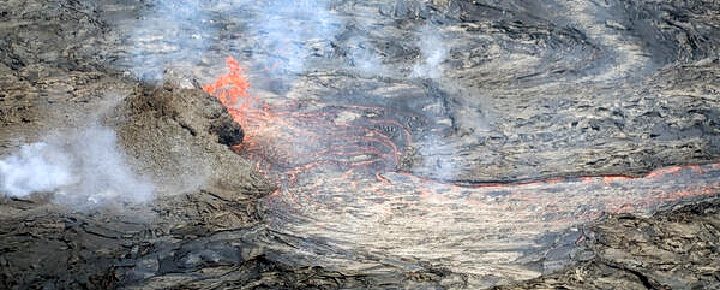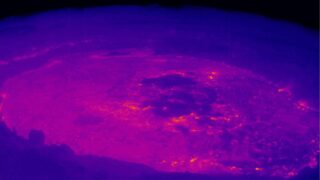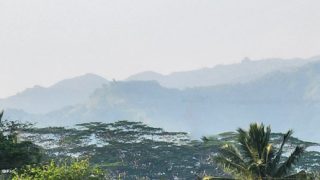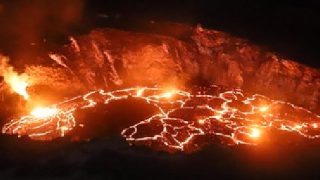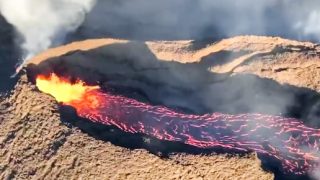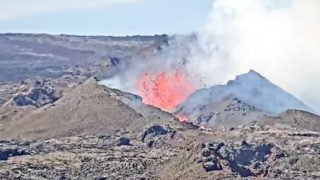Updated 7pm HST. The USGS has just reversed its earlier warning that an eruption was imminent. Here’s the latest:
“Kīlauea volcano is not erupting. Geophysical signals recorded by the USGS Hawaiian Volcano Observatory indicate that a magmatic intrusion occurred beneath the summit of Kīlauea between approximately 11:00 a.m and 12:00 p.m. HST on March 11, 2023. As of 5:30 p.m. HST, seismicity has returned to background levels, ground deformation has stabilized, and no lava has been observed at the surface. Resumption of eruptive activity at Kīlauea summit no longer appears to be imminent, although it is possible that another intrusion or resumption may occur in the near future with little or no warning.”
USGS said that they have been “recording an inflationary signal at Kīlauea summit since March 7, indicating that magma has been accumulating beneath the surface. Tilt excursions also coincided with this morning’s earthquake swarm. Summit tilt has stabilized since approximately 12:00 p.m. HST although slow inflation continues.”
Kilauea Volcano is an amazing feat of nature.
The United States Geological Survey (USGS) said three days ago, “The Kīlauea volcano eruption paused on March 7th, 2023, after 61 days of volcanic activity. No lava or night-time glow is visible at this time.” We assumed that significant time would now pass before it erupted again.
But now it appears that a resumption of Kilauea’s eruption at the summit is about to happen. It is unclear whether there could be any significant volcanic ash emission threat into the atmosphere, but USGS previously indicated that “The opening phases of eruptions are dynamic. Increased earthquake activity at the Kilauea summit began earlier today.”
It also isn’t clear how significant an eruption could be or whether it could impact Hawaii flights as was previously the case on the eruption’s first day.
Notification from the Hawaiian Volcano Observatory just reported, “eruption is likely imminent.
USGS said, “A shallow earthquake swarm has been detected beneath the summit of Kīlauea Volcano, accompanied by significant surface tilt excursion. Resumption of eruptive activity at Kīlauea summit is likely imminent.”
As a result, the volcano alert level will be set to watch, and the aviation color code is orange.
The prior eruption lasted 61 days, and it is unclear what the “likely imminent” coming eruption will entail.
The last eruption ended due to what USGS called a “larger deflationary tilt drop” that started last month, when the ground deflates, which can result in a diminishment of the eruption. It began on January 5.
See: Volcano Travel | Kilauea Erupts | How To Visit.
Hawaii’s Kilauea remains one of the most active volcanoes in the world.
In 2018 an eruption at Kilauea destroyed over 700 homes. Before that, Kilauea had been erupting since 1983. More recently, the eruption began in September 2021, and just two months later, the connected volcano Mauna Loa erupted. It had been nearly four decades since both had been in a state of eruption. Observatory scientist Ken Hon said it “was a beautiful eruption, and lots of people got to see it, and it didn’t take out any major infrastructure and, most importantly, it didn’t affect anybody’s life.”
Will volcano travel resume?
Volcano travel will likely resume again on the Big Island, and we hope to be heading back there to check it out personally when it occurs. Native Hawaiian tradition indicates that the Halemaumau (with diacriticals, Halema`uma`u) crater is home to the volcanic deity Pele.
Get Breaking Hawaii Travel News
